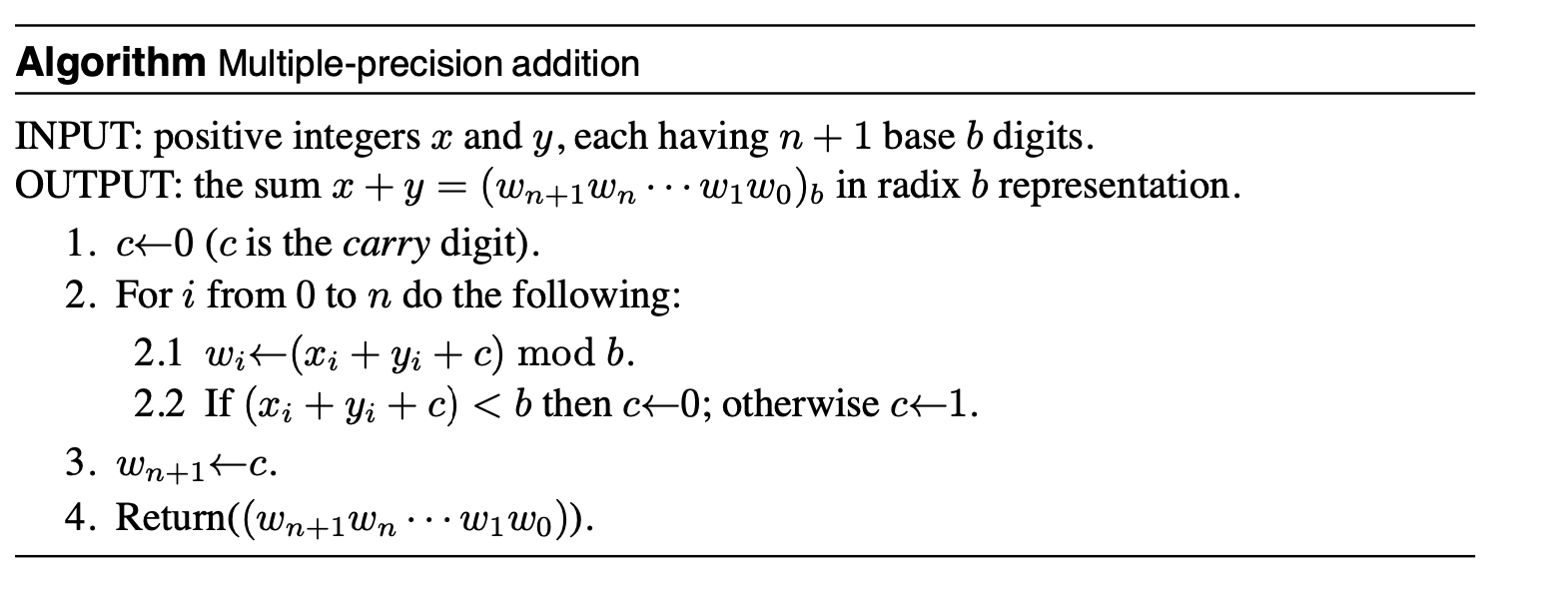multiple-precision integer arithmetic
If \(b ≥ 2\) is an integer, then any positive integer \(a\) can be expressed uniquely as \(a = a_n \cdot b^n+a_{n−1}\cdot b^{n−1}+···+a_1 \cdot b+a_0\), where \(a_i\) is an integer with \(0≤a_i <b \) for \(0≤ i ≤ n \), and \(a_n \ne 0\).
The representation of a positive integer \(a\) as a sum of multiples of powers of \(b\), as given above, is called the base \(b\) or \(radix b\) representation of \(a\), which is usually written as
\(a = (a_n a_{n−1} ···a_1 a_0)_b\)
If \( (a_n a_{n−1} ···a_1 a_0)_b\) is the base b representation of \(a\) and \(a_n \ne 0\), then the precision
or length of a is n + 1. If n = 0, then a is called a single-precision integer; otherwise, a is a multiple-precision integer.
The division algorithm for integers provides an efficient method for determining the base b representation of a non-negative integer
if \( (a_{n} a_{n−1} ···a_1 a_0)_b \) is the base b representation of a and k is a positive integer, then
\( (u_{l} u_{l−1} ···u_1 u_0)_{b^k} \) is the base \( b^k \) representation of a, where \( l =\lceil (n+1)/k \rceil -1 \),
\( u_i = \sum_{j=0}^{k-1} a_{ik+j}b^j \) for \( 0 \le i \le l-1 \), and
\( u_l = \sum_{j=0}^{n-lk} a_{lk+j}b^j\)
Representing negative numbers
complement representation.
addition and subtraction

subraction is quite similar to addition. (omitted here)
multiplication
Let x and y be integers expressed in radix b representation:
\( x = (x_n x_{n−1} ··· x_1 x_0)_b \) and
\( y = (y_t y_{t−1} ··· y_1 y_0)_b \). The product x · y will have at most (n + t + 2) base b digits.